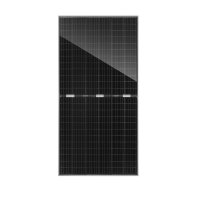
The last few years have seen ample legal back and forth about the Bifacial Module Tariff Exclusion. These revisions have affected the solar industry as a whole, including installers. Since 2018, we have seen annual updates to the Bifacial Tariff Exclusion with the most recent update in 2021. On November 16, 2021, the Court of International Trade (CIT) reinstated the Bifacial Tariff Exclusion and lowered the tariff rate from 18% to 15%.
While the November 16th decision is a big win for the solar industry, this did not happen overnight and the legislation has been volatile over the years. Therefore, it is important to note the causes at play in such a significant policy choice. In this article, we will review the history and the factors influencing this most recent ruling.
Recent History
In early 2018, the CIT imposed safeguard measures on certain imported solar products. This resulted in the CIT excluding bifacial solar panels. In June 2019, The CIT withdrew the Tariff Exclusion for Bifacial Modules. This ruling remained in place until October 2020, when the tariff on the bifacial panels was extended and the rate was raised from 15% to 18%. Fast-forward to November 2021, when the Bifacial Module Tariff Exclusion was reinstated and the tariff rate was reduced back to 15%, along with refunds coming for the tariffs that had been collected under the proclamation at 18%. This rate shift was a long time coming for the industry and will positively affect the importation of bifacial modules for solar companies and contractors.
The Impact
As tariff rates decrease due to the reinstated Exclusion, the importation of these panels will be positively impacted. Since more than 60% of the world’s solar panels and products are made in China and less than one percent of solar panels are made in the US, this tariff rate reduction is crucial to the solar industry because of the concentration of bifacial panels from outside of the United States. In turn, the reduced import rates of bifacial panels will help to increase profitability for the solar industry and allow for improvements in the efficiency of the modules being produced. Many installers and contractors could see more solar projects as a result of the Tariff Exclusion since the product will be more accessible, providing an increased value to the industry as a whole.
The Bifacial Tariff Exclusion and decreased tariff rate are both a great triumph for the US solar industry. This also allows installers and contractors to expect an uptick in bifacial projects in the near future. The evolution of the Bifacial Tariff Exclusion has been a bumpy ride but is now in a state that will bolster the continued growth of the Solar Industry.
